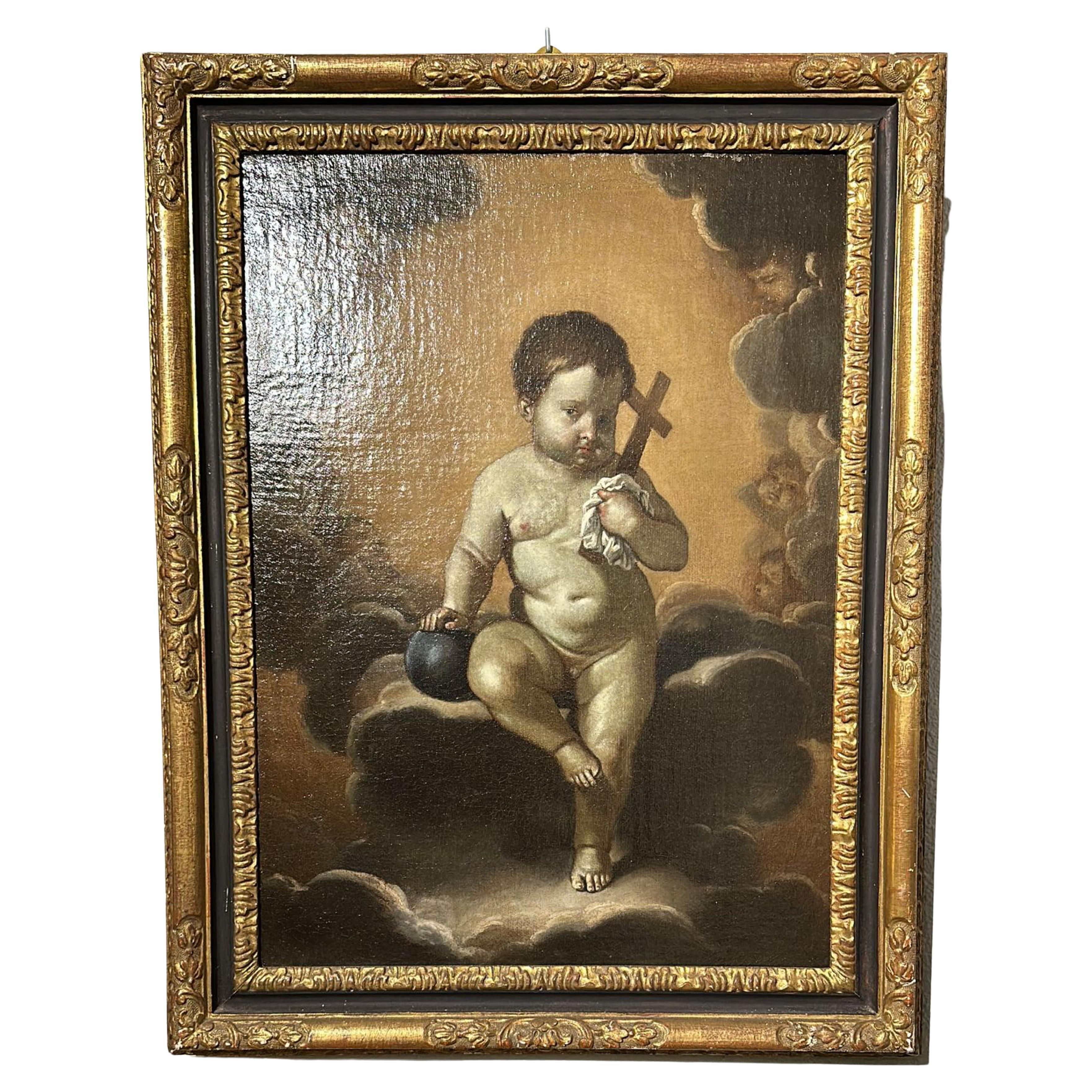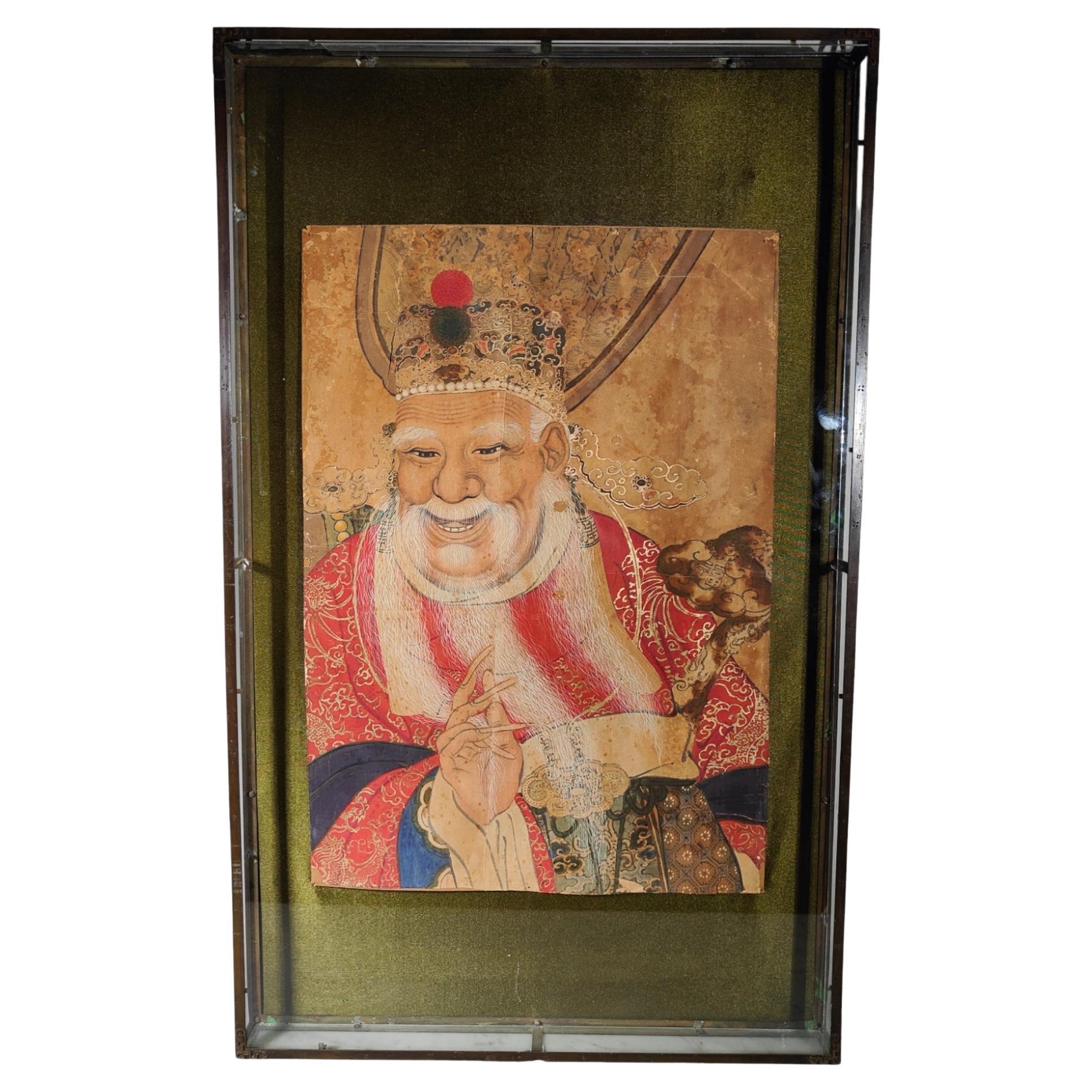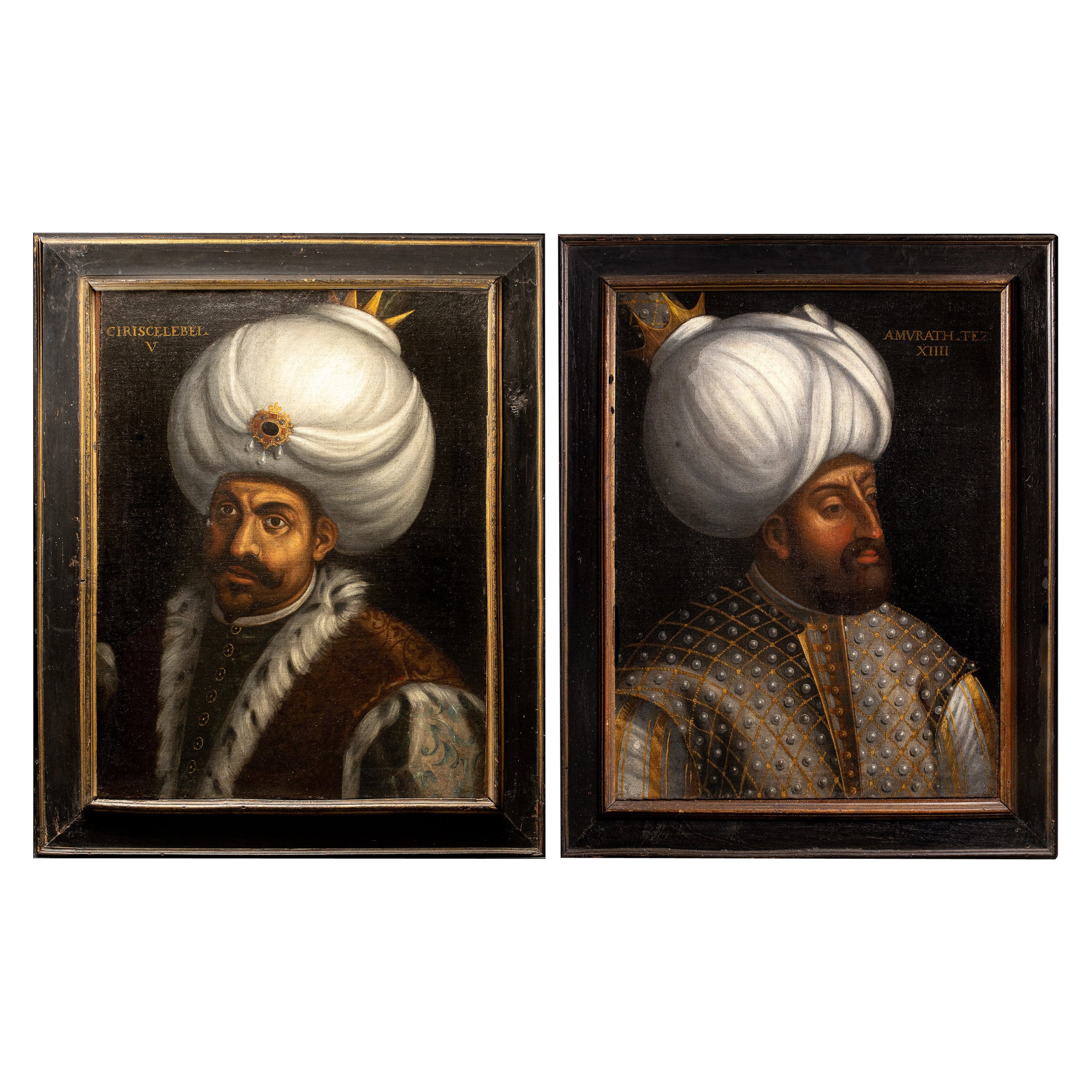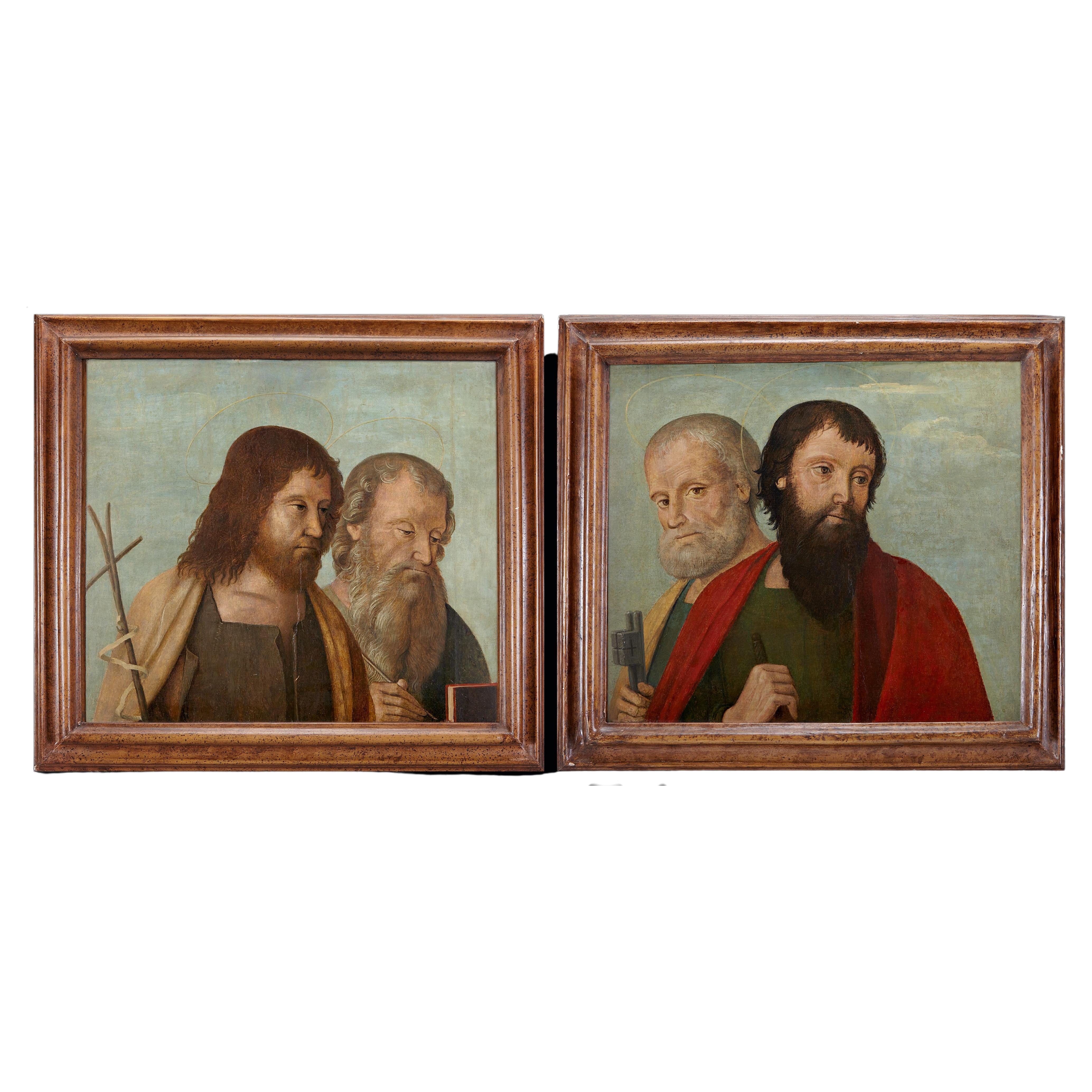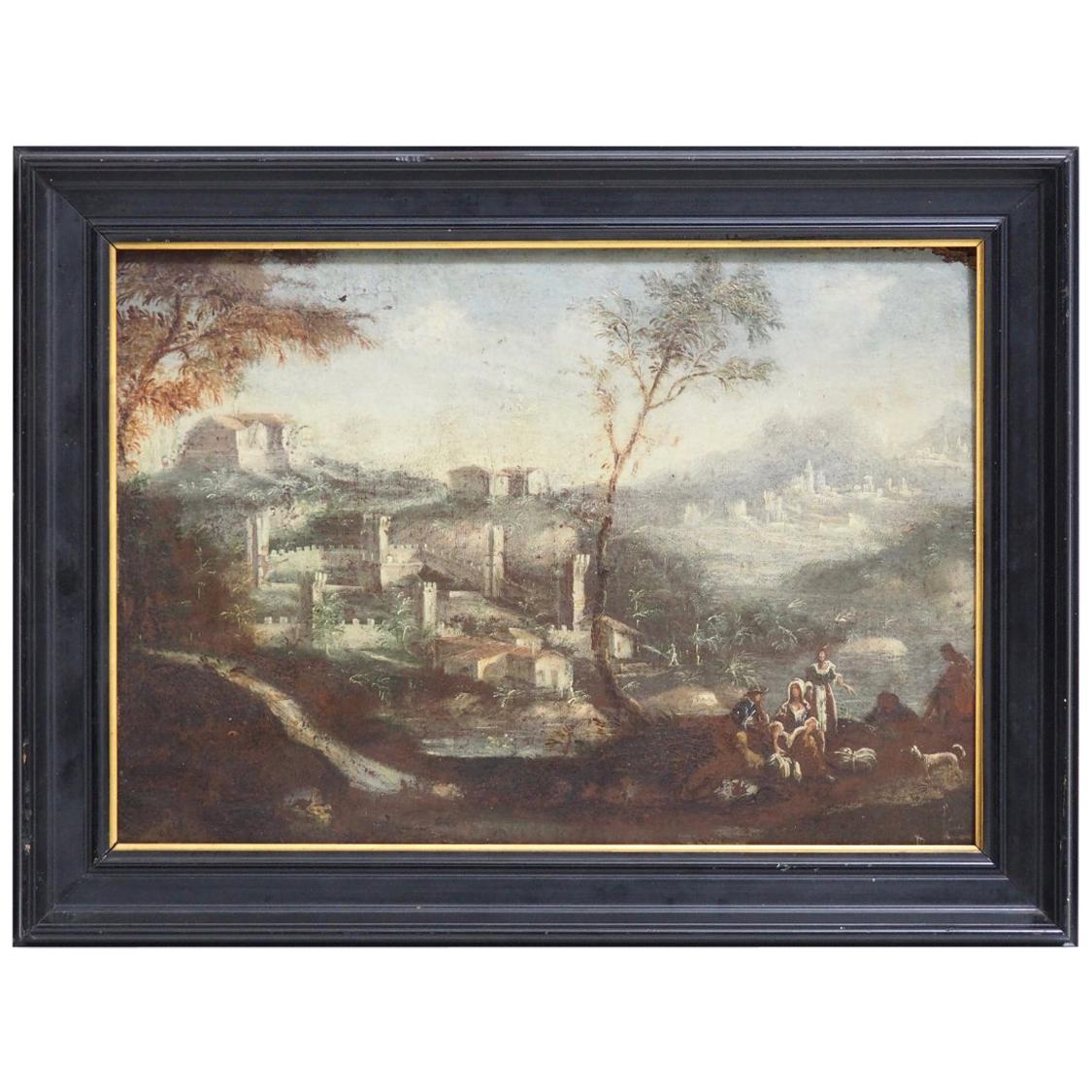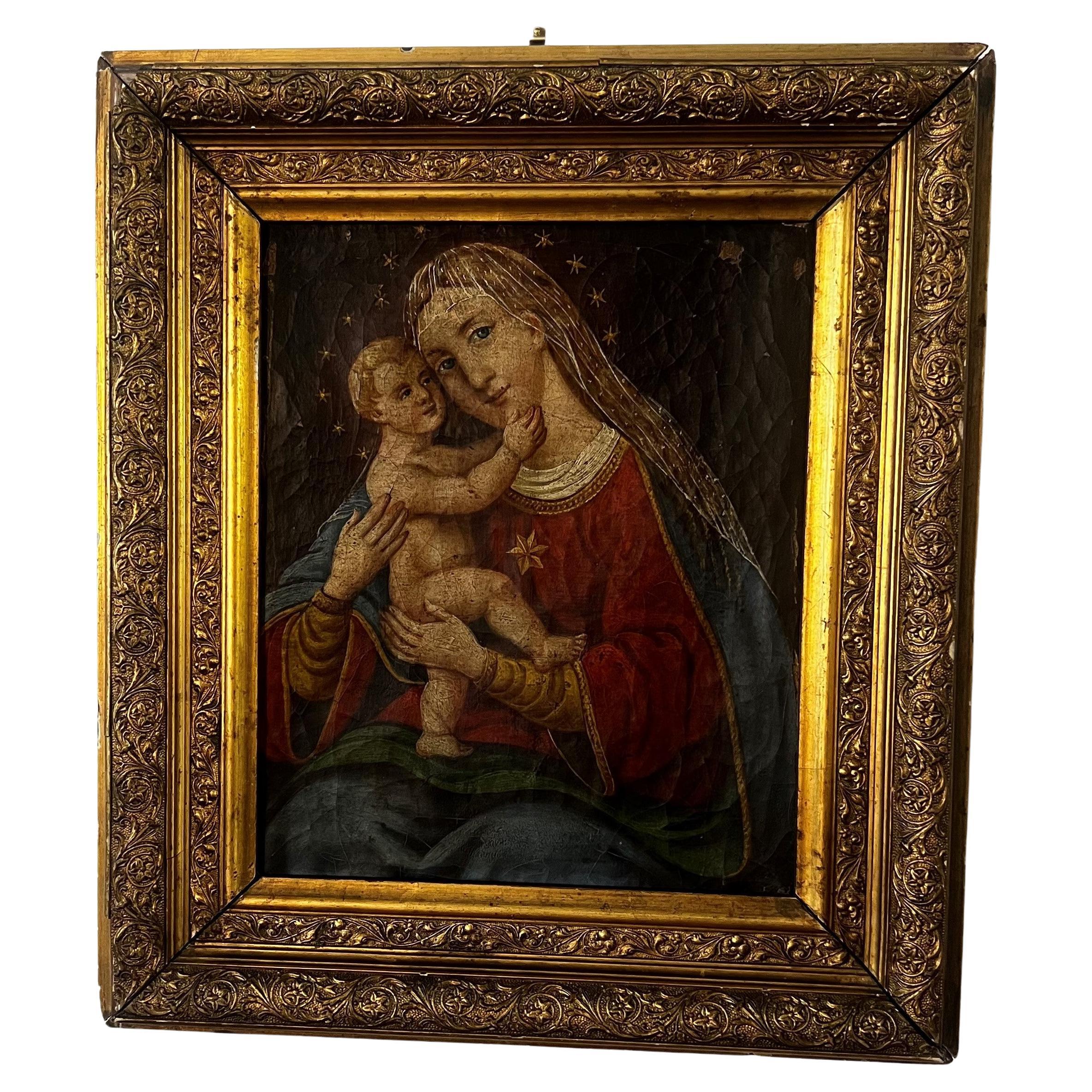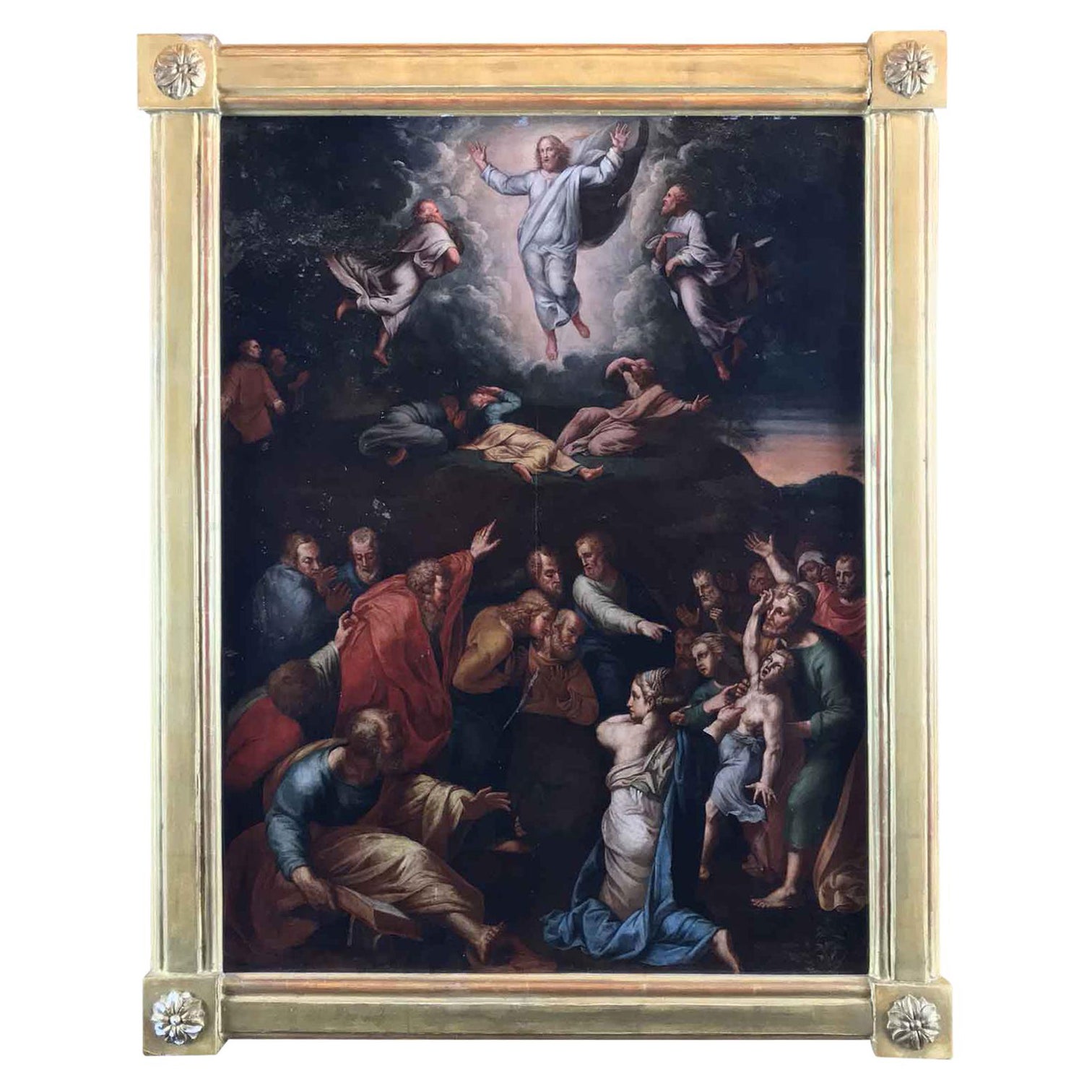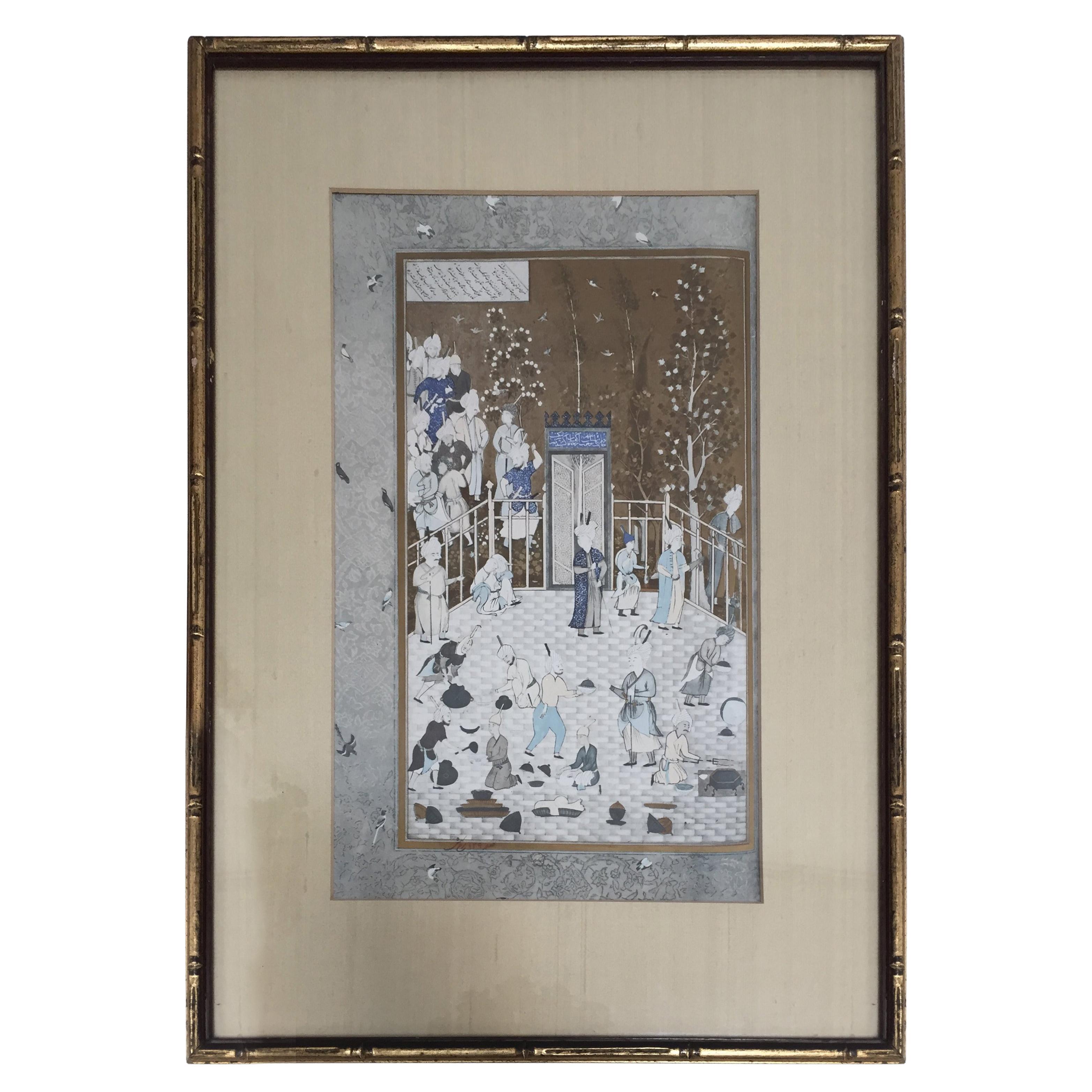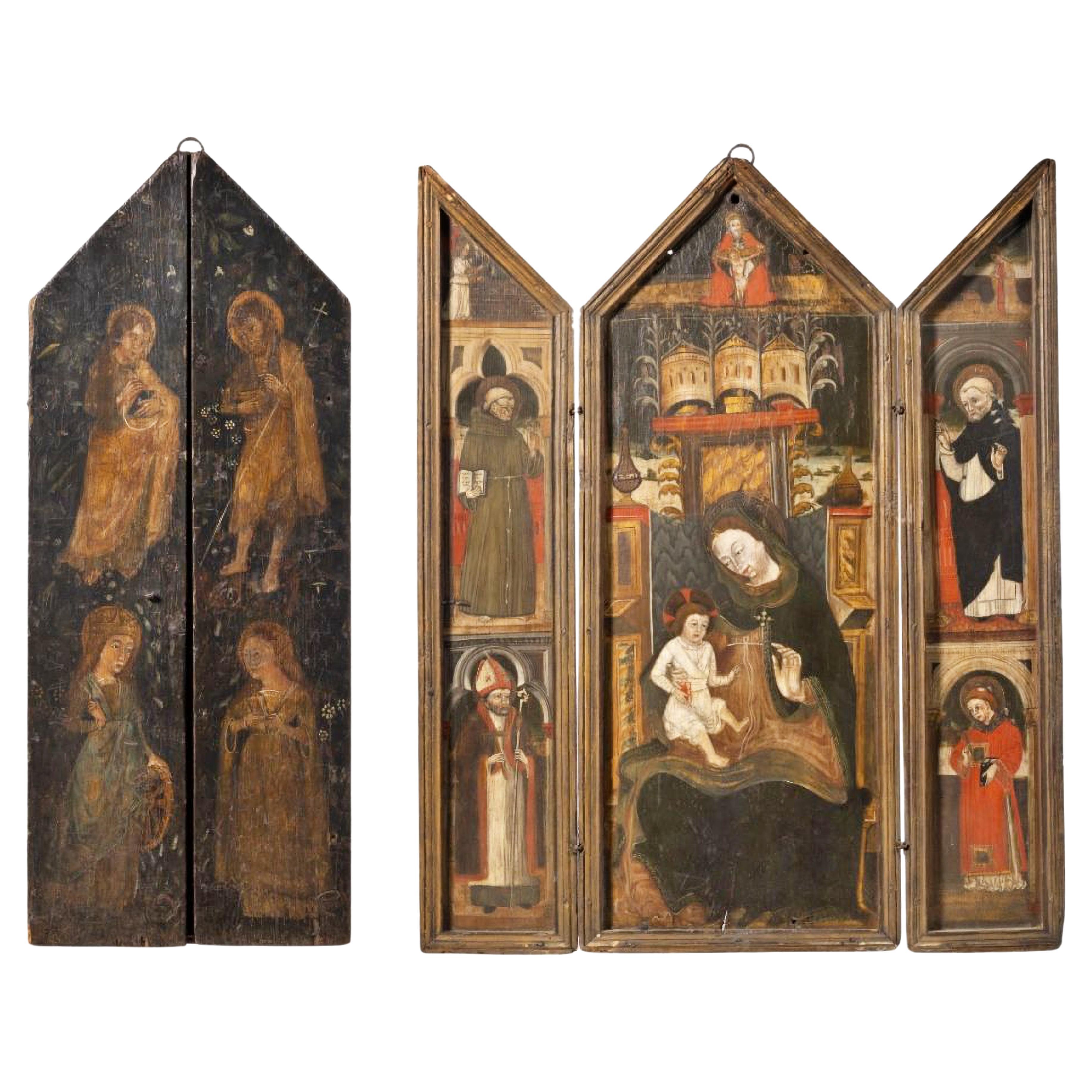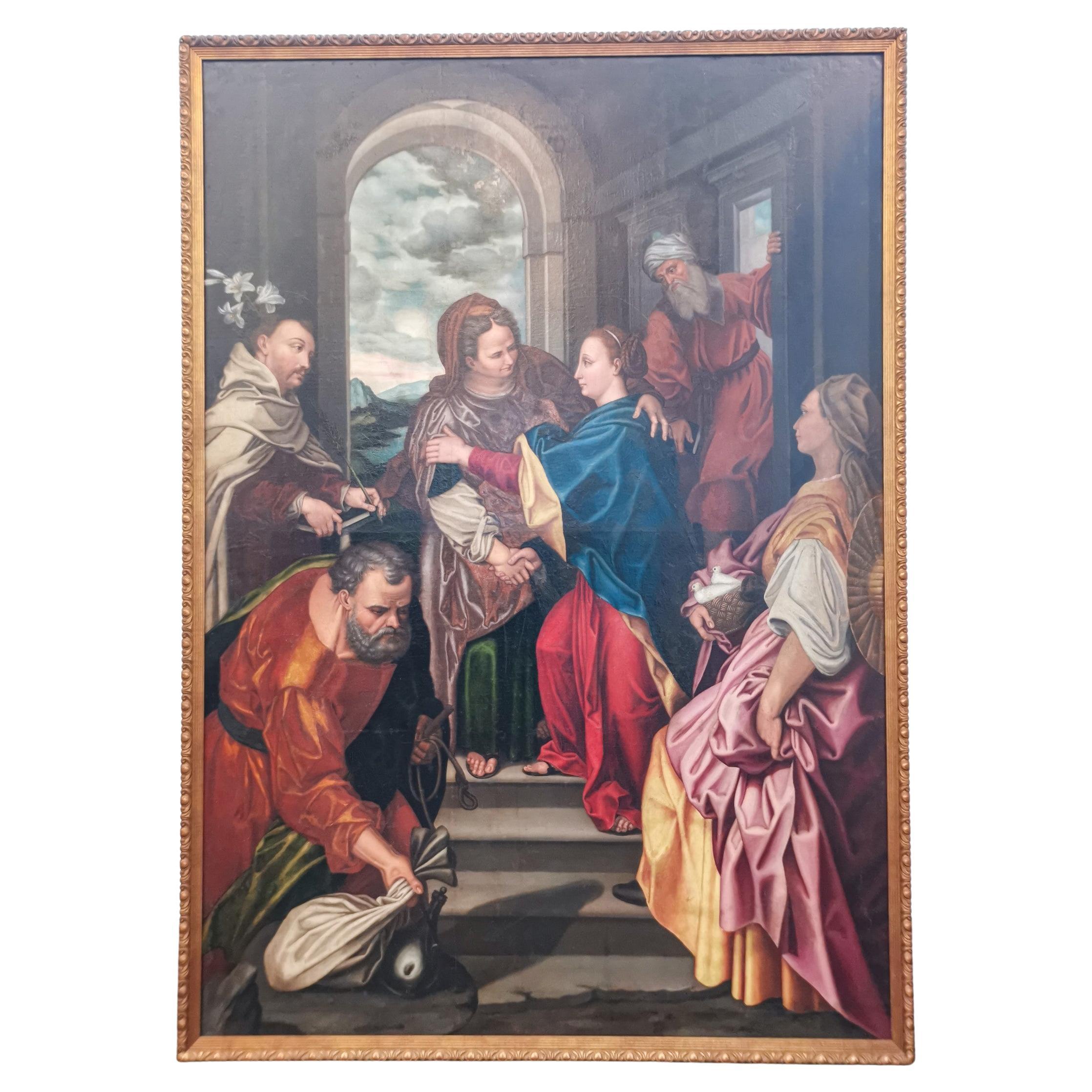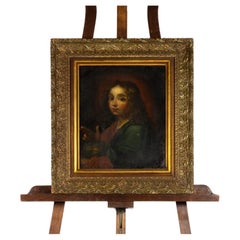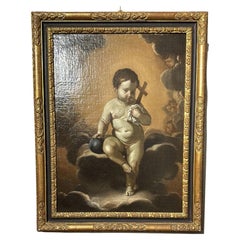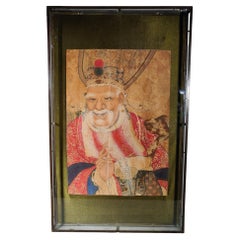
Joos Van Cleve Follower 16th Century "Salvator Mundi"
View Similar Items
1 of 11
Joos Van Cleve Follower 16th Century "Salvator Mundi"
About the Item
- Dimensions:Height: 21.26 in (54 cm)Width: 14.57 in (37 cm)Depth: 3.94 in (10 cm)
- Style:Renaissance (Of the Period)
- Materials and Techniques:Paint,Woodwork
- Place of Origin:
- Period:
- Date of Manufacture:1500-1550
- Condition:Wear consistent with age and use. very good condition for the age.
- Seller Location:Madrid , ES
- Reference Number:1stDibs: LU4980117298452
You May Also Like
- Baroque Christ Salvator Mundi Painting, 17th CenturyLocated in Lisbon, PTA 17th Century baroque painting of a sideview of Jesus Christ Salvator Mundi or Saviour of the World in sfumato Saint Savior of the World, a title given to Christ on the Catholic f...Category
Antique 17th Century Italian Baroque Paintings
MaterialsCopper
- Attribution of Mattia Preti " Salvator Mundi " 17th CenturyBy Europa AntiquesLocated in Madrid, ESAttribution of Mattia Preti " Salvator Mundi " 17th Century Italian painting from the 17th century depicting the figure of the infant Jesus as Salvator Mundi (Savior of the World),...Category
Antique 17th Century Italian Baroque Paintings
MaterialsPaint
$3,060 Sale Price20% Off - Chinese Watercolor 16th CenturyLocated in Madrid, ESChinese Watercolor 16th century Ancient Chinese watercolor from the 16th century framed after the beginning of 1900. Total measures: 85x52x6 cm a...Category
Antique 16th Century Decorative Art
MaterialsPaper
$1,661 Sale Price20% Off - Pair of 16th C Portraits of Turkish Ottoman Sultans, follower of Paolo Veronese.Located in Leuven , BEPortrait of Sultan Isa Çelebi (died 1403),identity inscribed in Latin. Portrait of Sultan Murad III (1546–1595), identity inscribed in Latin. The present paintings refer to the works attributed to a follower of Paolo Veronese in the Bayerische Staatsgemälde Sammlungen , Würzburg . The paintings are comparable and complementary to a set of 6 Turkish rulers sold in 2022 for 1,5 M. by Sothebys. Located at the crossroads of East and West, the Ottoman Empire absorbed a diverse range of influences, including Chinese, European, and Persian, to produce a distinctive and coherent artistic language throughout a range of decorative arts. Ottoman expansion into Eastern Europe and subsequent access to the silver mines of the Balkans between the 14th and 16th C. led to a rich and skilled tradition of Ottoman silverware, tiles, dishes, and other ceramic objects. From the 16th to 19th C. the production of decorative arts continued to flourish with the introduction of both rococo and baroque elements signalling an increasingly open attitude to all things European. The production of Orientalist paintings is rich in topographical landscapes of Istanbul, genre scenes, and portraits of Ottoman notables. Europe’s fascination with its powerful, Muslim neighbours inspired a wave of accounts and paintings of the Ottoman world. The taking of Constantinople in 1453 by the young Mehmet II ('The Conqueror’) not only sparked this interest, but the young Sultan himself, who invited European painters to his court, further fuelled this fashion. The period following his reign saw relations between the Republic of Venice and its powerful neighbour reach a state of relative calm, initiating a period of exchange and trade. The present portraits of the Sultans, depicted in three-quarter view and wearing a large turban and richly embroidered cloak...Category
Antique 16th Century Italian Paintings
MaterialsCanvas, Paint
- Two Early 16th Century Venetian Panel Paintings of Saints and ApostlesLocated in Leesburg, VAVenetian school, early 16th century Oil on panel, 49 x 56 cm. Framed (restorations) These two panel paintings, portraying John the Baptist a...Category
Antique 16th Century Italian Renaissance Paintings
MaterialsWood, Paint
$13,125 Sale Price / set25% Off - Old Master Painting, Unsigned, 16th CenturyLocated in Aalsgaarde, DKOld master painting, unsigned, 16th century.Category
Antique 16th Century European Paintings
Recently Viewed
View AllMore Ways To Browse
England 1500
16th Century Dutch Portrait
British Sovereign
Orb Wall Art
Christ Of Saint John Of The Cross
Antique Fireplace Mantels New York
Christ Carrying Cross
Olive Press
Flemish Old Master Religious
Half Sovereign
Van Cleef Germany
Van Cleef Table
Antique Olive Press
Used Olive Oil Press
Antique Wood Fireplaces London
16th Century Religious Table
Orb Fireplace
Salvator Mundi

